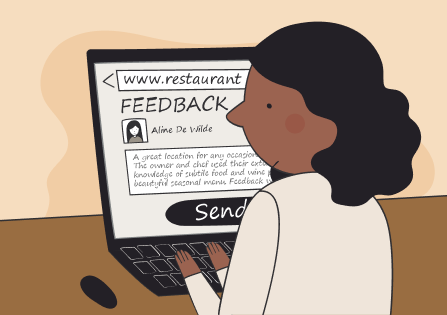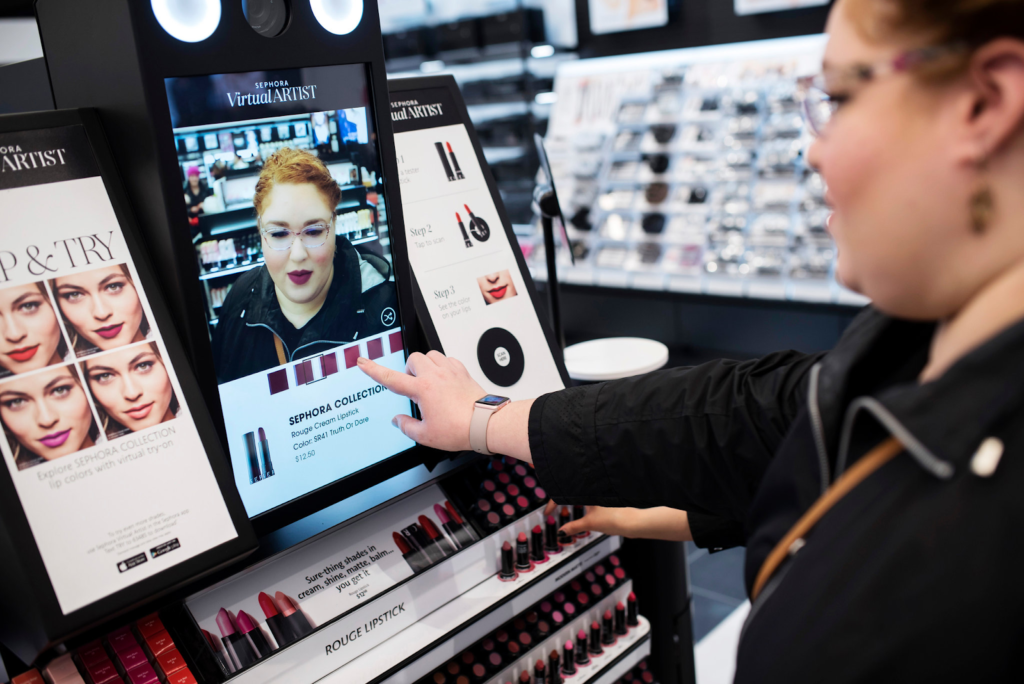Understanding and enhancing customer experience (CX) is more than a perk—it's a necessity. But what exactly is customer experience? How can it be measured effectively, and what strategies can businesses employ to improve it?
We know all the answers and are ready to share. Without further ado, let’s explore the nuances of customer experience and its significance.
Contents
What is customer experience?

Imagine you're planning a special anniversary dinner for your friend. You heard rave reviews about a charming bistro downtown and decided to make a reservation. From the moment you call to inquire about availability to the warm congratulations you receive upon arrival, every interaction leaves you feeling valued and appreciated. The attentive service, exquisite cuisine, and intimate ambiance are combined to create a dining experience you'll cherish forever.
But sometimes it's different.
Imagine a frustrating encounter you had while shopping online for a birthday gift. Despite navigating through a maze of product listings and clicking through countless pages, you struggle to find the perfect present. When you contact customer support for assistance, you're met with robotic responses and long wait times, leaving you feeling more stressed than when you started.
In both scenarios, the outcome hinges on the product or service and the journey—the series of interactions that shape the overall experience. Whether savoring a gourmet meal or navigating an e-commerce website, customers crave seamless, personalized experiences that resonate on a deeper level.
In essence, customer experience is the sum of every interaction, every emotion, and every memory that defines a customer's journey with a brand or service. By weaving together moments of joy, surprise, and connection, businesses can transform ordinary transactions into extraordinary experiences that keep customers coming back repeatedly.
Why is CX important for your business?

An exceptional CX strategy transforms fleeting interactions into enduring bonds and converts skeptics into fervent advocates. But how, exactly, does CX elevate your business from the mundane to the extraordinary?
Let’s explore this through examples that illustrate the profound impact of CX:
- Cultivating unshakable brand loyalty. Imagine a situation where a glitch in an online game ruins a player's progress. Instead of a cold, automated apology, they're greeted by a personalized message from the game developers, offering a fix and exclusive content as a gesture of goodwill. This level of attentiveness and personalized care transforms a frustrated user into a lifelong fan, demonstrating how proactive CX can turn a mishap into a moment of loyalty.
- Setting your brand apart in a crowded marketplace. Say, there are two bakeries in your neighborhood: both offer delicious pastries. But only one sends you home with a warm smile, your favorite treat prepared just as you like without you having to ask, and perhaps a little handwritten note on your coffee cup. This bakery isn’t just selling pastries; it’s selling a personalized, warm experience. You’re not just a customer; you’re part of a story, and that’s a narrative you’ll choose again and again.
- Powering viral word-of-mouth marketing. Consider the story of a hotel guest who offhandedly mentions their love for vintage jazz in conversation with the staff. The next evening, they find a vinyl record of classic jazz hits and a personal note. Delighted, they share this story across social media, drawing immediate attention and admiration toward the hotel. This kind of organic, heartfelt endorsement is marketing gold, achievable only through stellar CX.
- Encouraging continuous improvement through feedback. Take, for example, a tech company that actively engages its user community in beta testing, incorporating their input into software updates. When the final version is released, it’s not just a product but a co-creation with its users, who feel heard and valued. This feedback loop is a powerful tool for improvement and innovation, showing that CX is not a one-way street but a collaborative journey.
- Maximizing customer lifetime value with personalized experiences. There can be a streaming service that doesn’t just recommend shows based on algorithms and curates special playlists around your interests, perhaps even introducing a feature that lets you explore content related to your hobbies. This tailored approach makes customers feel understood on a personal level, greatly enhancing their satisfaction and engagement with the service over time.
- Reducing customer churn. For instance, an online retailer that, instead of processing returns, offers a virtual concierge service to find a perfect alternative, turning a potential loss into a new opportunity for satisfaction. This proactive approach to problem-solving minimizes dissatisfaction and fosters a sense of being cared for, significantly reducing the likelihood of customers leaving for a competitor.
- Elevating employee engagement and satisfaction. For example, a company that celebrates customer compliments as team achievements and integrates customer happiness into its core values. Employees in such a workplace feel their work has meaning and impact, leading to higher engagement, creativity, and retention. When employees are proud ambassadors of their brand, their genuine enthusiasm is contagious, enhancing every customer interaction.
How to measure and analyze customer experience?

Navigating the complex landscape of customer experience requires more than intuition; it demands a blend of art and science. Measuring and analyzing CX is akin to embarking on a treasure hunt where the treasure is invaluable insights into your customers' hearts and minds.
This journey is not just about numbers; it's about understanding stories, emotions, and connections. Let's see how businesses can adeptly measure and analyze CX to meet and exceed customer expectations.
- Embarking on the quest: Set clear objectives
The first step is akin to charting a map. You need to know what you're searching for. Are you looking to enhance customer satisfaction, increase loyalty, or improve service speed? Setting clear, measurable goals helps focus your efforts and ensures the data you collect is relevant and actionable.
- Gathering the tools: Select the right client experience metrics
In your arsenal, you need the right tools. Key performance indicators (KPIs) such as Net Promoter Score (NPS), Customer Satisfaction Score (CSAT), and Customer Effort Score (CES) are like compasses guiding you through the vast sea of customer feedback. Each metric offers insights into different aspects of the CX:
1. NPS gauges the likelihood of customers recommending your brand, highlighting loyalty and satisfaction.
2. CSAT measures immediate satisfaction with a product or service, offering a snapshot of customer happiness at a specific time.
3. CES evaluates the ease of interaction with your company, highlighting the friction points in the customer journey.
- The treasure hunt: Collect data
With clear objectives and tools at your disposal, the next step is to collect the treasure—data. It involves deploying surveys at strategic points in the customer journey, monitoring social media for brand mentions, analyzing customer support tickets, and gathering feedback from customer-facing employees. Each data source is a piece of the puzzle, revealing different facets of the customer experience.
Step 4. Deciphering the map: Analyze the data
Once you have your treasure trove of data, the real work begins. This phase is about looking for patterns, trends, and anomalies. Advanced analytics tools can help identify common customer journey issues and areas for improvement and even predict future customer behavior. This is where the narrative of your customers' experiences starts to take shape, telling you not just what is happening but why.

Step 5. Following the clues: Turn insights into action
Insights without action are like a map without a destination. The ultimate goal of measuring and analyzing CX is to improve it. That means prioritizing areas for improvement based on their impact on customer satisfaction and business outcomes. It could involve redesigning a convoluted checkout process, streamlining customer support interactions, or personalizing the customer experience based on previous interactions.
Step 6. The never-ending journey: Continuously improve
The quest for exceptional CX is ongoing. The market changes, new technologies emerge, and customer expectations evolve. Regularly measuring and analyzing CX ensures your business remains agile, responsive, and aligned with your customers' needs and desires. It's a cycle of improvement that keeps the customer at the heart of your business.
Ways to improve the customer experience

Improving client experience is crucial across all business channels, whether online, offline, or both. Here are a few strategies for enhancing CX, with real-world examples demonstrating how these approaches are implemented across different business models.
- Personalization
Creating a unique and tailored experience for each customer, based on their preferences, behaviors, and past interactions, can significantly enhance satisfaction and loyalty.
- An online business example
Amazon sets the standard for online personalization, using complex algorithms to recommend products based on previous purchases, search history, and even what other customers have bought or viewed. It helps tailor the shopping experience to each user, increasing satisfaction and sales.
- An offline business example
Starbucks uses its mobile app to personalize the customer experience in its physical stores. The app remembers your favorite drinks, suggests new ones based on your history, and allows you to order ahead for quick pickup, making each visit feel personalized.
- An omnichannel business example
Nike offers a seamless and personalized customer journey across its digital platforms and physical stores. Online, customers can use the Nike app to design custom shoes, and offline, they can visit Nike stores to receive personalized fitting sessions and consultations, ensuring a tailored experience wherever they interact with the brand.
- Seamless omnichannel experience
Offering a consistent and fluid experience across multiple channels ensures customers can switch between online and offline touchpoints without friction or frustration.
- An online business example
Warby Parker, an online eyeglass retailer, offers a seamless experience with features like virtual and home try-on programs. Customers can select frames online, try them at home, and make their purchases either way.
- An offline business example
Apple’s retail stores are perfectly integrated with its online presence. Customers can start a service request online and complete it in-store or browse products online and pick them up at a local Apple Store, experiencing a seamless transition between online and offline channels.
- An omnichannel business example
Sephora excels at offering a cohesive experience across digital and physical realms. Customers can use the Sephora app to scan products in-store for reviews, try on makeup virtually, and earn redeemable rewards online and offline, providing a unified brand experience.

- Excellent customer support
Providing responsive, helpful, and empathetic support across all customer interactions can turn potential frustrations into positive experiences, building trust and loyalty.
- An online business example
Zappos, an online shoe and clothing retailer, is famous for its exceptional customer service. With a 365-day return policy and 24/7 support, Zappos empowers its service reps to go above and beyond, including surprising customers with free upgrades to overnight shipping.
- An offline business example
Nordstrom, a luxury department store, is renowned for its outstanding customer service, including hassle-free returns, personal shopping assistants, and a commitment to customer satisfaction that goes above and beyond, such as accepting returns without receipts or time limits.
- An omnichannel business example
Best Buy transformed its approach to customer service across both online and offline channels. For online shopping, customers can receive support through chatbots, social media, and phone or visit the Geek Squad in-store, a subsidiary of American and Canadian multinational consumer electronics corporation Best Buy, for tech support and repairs, ensuring consistent and helpful service across all touchpoints.
- Engaging and useful content
Delivering relevant and engaging content that adds value to the customer’s experience can differentiate a brand and foster a deeper connection with its audience.
- An online business example
HubSpot, a developer and marketer of software products for inbound marketing, sales, and customer service, provides a wealth of free resources and tools on its website. This content helps customers and positions HubSpot as a thought leader in its industry.
- An offline business example
Whole Foods Market hosts cooking classes and wellness workshops in its stores, providing valuable, engaging content that enhances the shopping experience and builds community among its customers.
- An omnichannel business example
REI, an outdoor retail co-op, offers an extensive library of online content, including articles, classes, and virtual events related to outdoor activities and gear. Additionally, REI’s in-store classes and group outings encourage community building and ensure customers have a great experience, whether they’re shopping online or in person.
Wrapping up
CX stands as the heartbeat of any successful business. It's the alchemy that transforms simple interactions into memorable moments, fostering loyalty, advocacy, and a deep, enduring connection between brands and their customers. Whether it's the warm welcome of a cozy café that feels like a shelter on a rainy day or the meticulous attention to detail that turns a special dinner into an unforgettable celebration, CX is about crafting stories that resonate with customers on a personal level.
Ultimately, the goal of enhancing client experience is not just to satisfy but to delight, meet expectations, and exceed them, creating loyal customers and brand ambassadors. It's a dynamic process that requires businesses to remain agile, responsive, and always attuned to their customers' evolving needs and desires.
By embracing the principles of CX and committing to its ongoing enhancement, businesses can achieve more than just commercial success; they can become beloved parts of their customers' lives, woven into the fabric of their daily experiences. In this era of endless choices and fierce competition, the companies that understand and prioritize the art and science of CX are the ones that will flourish, building lasting legacies on the foundation of meaningful, memorable customer relationships.
Key takeaways
- CX is the sum of all interactions: From the initial contact to the post-purchase experience, the quality and cohesion of these interactions shape customer perceptions and emotions.
- Measurement is essential: Tools like NPS, CSAT, and CES offer insights into customer satisfaction and areas for improvement, guiding businesses in refining their strategies.
- Improvement is a continuous journey. By employing strategies such as personalization, seamless omnichannel experiences, excellent customer support, and engaging content, businesses can elevate their CX. Companies like Amazon, Starbucks, and Nike showcase how these strategies can be effectively implemented across online, offline, and mixed business models.





